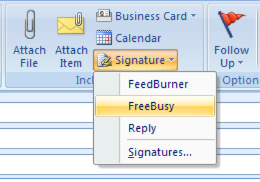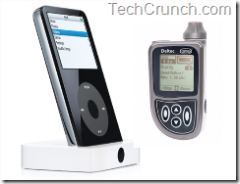 Six years ago, my wife and I went on a wireless trip across the country with my new (at the time) Insulin Pump and 8 PDAs. The pictures from this Planes, Trains and Automobiles across the country are still around.
Six years ago, my wife and I went on a wireless trip across the country with my new (at the time) Insulin Pump and 8 PDAs. The pictures from this Planes, Trains and Automobiles across the country are still around.
The trip was written up, lo these many years ago, at The Feature.com and is still available in their archives as "One Guy, an Insulin Pump, and 8 PDAs".
Here's a few bits of that article that I thought were significant or interesting with new emphasis mine:
Now I've got three devices in my pocket -- each with screens, batteries, and buttons, but all alone in the world. Three devices, each with a distinct purpose, provide me with a little bit of information that I give my doctor. It's quite a mess, especially when it's time to change the batteries.
Of course, each of these devices has some interface to the outside world, but each comes with an interoperability catch. The pump has infrared, but it only communicates with proprietary software. The blood sugar meter has a serial port, but it only works with a custom cable and software. My cell phone has some kind of interface on its bottom, but no standard way to hook it up to any of these devices. The PalmPilot has a serial connector and infrared, but doesn't have support from the notoriously slow-moving healthcare industry. [Scott Hanselman writing for TheFeature.com in 2001]
The trip was fun - it was my wife and my first date, and she and I were married three months later, but from a technology perspective it was a huge failure. The technology wasn't ready.
Today, Amy Tenderich has a great Open Letter to Steve Jobs (Mental Note: Write an Open Letter to Someone) up on her blog, DiabetesMine.com and TechCrunch is helping spread the good word.
Apple has sold 100 million iPods, and she points out that 20 million diabetics are using Glucose Meters and Insulin Pumps that smell of 1997.
There's a few issues here that are a problem, Amy's interested in better design and User Experience. She says:
In short, medical device manufacturers are stuck in a bygone era; they continue to design these products in an engineering-driven, physician-centered bubble. They have not yet grasped the concept that medical devices are also life devices, and therefore need to feel good and look good for the patients using them 24/7, in addition to keeping us alive.
Clearly, we need a visionary to champion this disconnect. We need an organization on the cutting edge of consumer design to get vocal about this issue. Ideally, we need a “gadget guru” like Jonathan Ive to show the medical device industry what is possible. [Amy Tenderich]
She's right on. Additionally for me, as an engineer, I want to know where's the iTunes Killer App for my Insulin Pump and Meter? Plugin and sync. Is that so far? I'm personally interested in the other side of the User Experience - getting at the data locked in these little devices. Well, we're working on it, but getting the data out of these meters is like pulling teeth.
Attention: Diabetes Device Manufacturers - Release my Data!
You can download the LifeScan OneTouch Ultra RS-232 Serial Protocol up at the LifeScan site, but the protocol for their flagship device, the UltraSmart (a now FOUR YEAR OLD meter) is hidden, encoded and proprietary. Kind of makes our ClickOnce Diabetes Downloader a little hard to implement, wouldn't you think?
It's very frustrating as we, the technical Diabetic community, try to move things forward that:
- There's no standard XML format for Diabetes Management.
- Most meters have a proprietary format.
- Only the FreeStyle is truly open with all their formats. More companies are slowly following suit. Here's a news flash, meter companies - your meter protocol is not the key to your success. Let it go.
- There's no standard interface cable.
- The closest we can get is a headphone jack to serial with a serial to USB interface. Again, only the FreeStyle works brilliantly.
Even my brand new, this year, insulin pump uses a cobbled together cable along with proprietary RF to dump it's data. And where does it dump the data to? A proprietary java-based Applet online that I have yet to get to work.
Maybe future meters will change this, or maybe someone from LifeScan will read this and release the UltraSmart meter protocol.
In the comments on TechCrunch, a Diabetes Technologist teases us with this tantalizing tidbit:
I’m a firmware engineer on a blood glucose meter at a very large, well known company. I agree that this is a great idea. I’d be much more excited if our product wasn’t a solid 5 years behind in design for a handheld device. We do have a product coming out in a couple years and the preliminary designs could possibly be the best looking meter I’ve seen to date. Sorry, I can’t disclose anything else about it!
Here's what I was hoping, in 2001, would have happened by now:
I imagine a world of true digital convergence -- assuming that I won't be cured of diabetes by some biological means in my lifetime -- an implanted pump and glucose sensor, an advanced artificial pancreas. A closed system for diabetics that automatically senses sugar levels and delivers insulin has been the diabetics' holy grail for years. But with the advent of wireless technology and the Internet, my already optimistic vision has brightened. If I had an implanted device with wireless capabilities, it could be in constant contact with my doctor. If the pump failed, it could simultaneously alert me, my doctor, and the local emergency room, downloading my health history in preparation for my visit. If it was running low on insulin, the pump could report its status to my insurance company, and I'd have new insulin delivered to my doorstep the next day.
We're not there yet. Thanks, Amy, for helping move the ball forward and cast some light on this problem. Medical devices lack 5 to 10 years in usability. We need updated UIs and updated and open Protocol Specs.
Hosting By
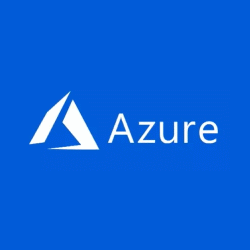
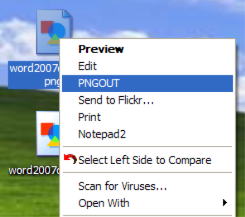
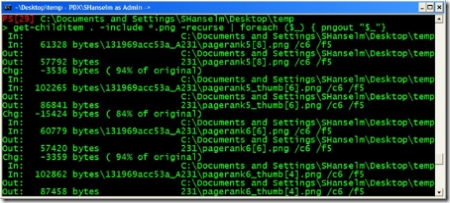

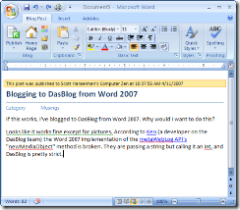 If this works, I've blogged to DasBlog from Word 2007. Why would I want to do this?
If this works, I've blogged to DasBlog from Word 2007. Why would I want to do this?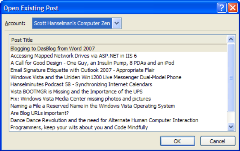


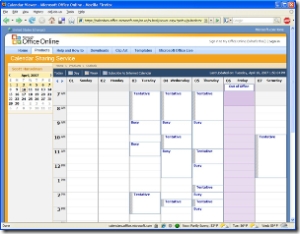 Replies including Free/Busy Information
Replies including Free/Busy Information
